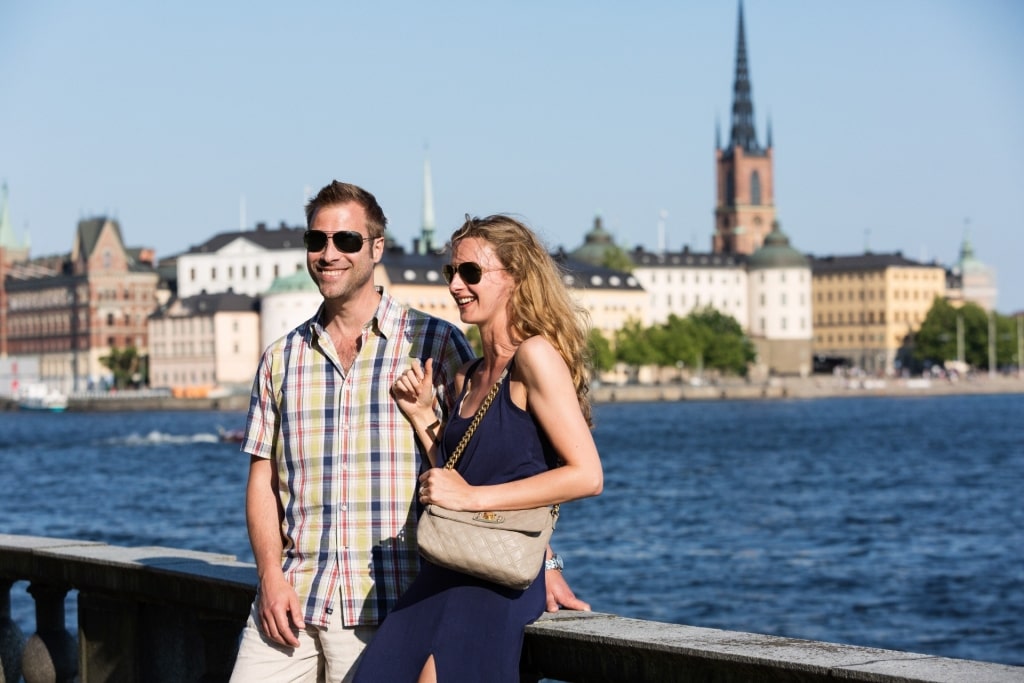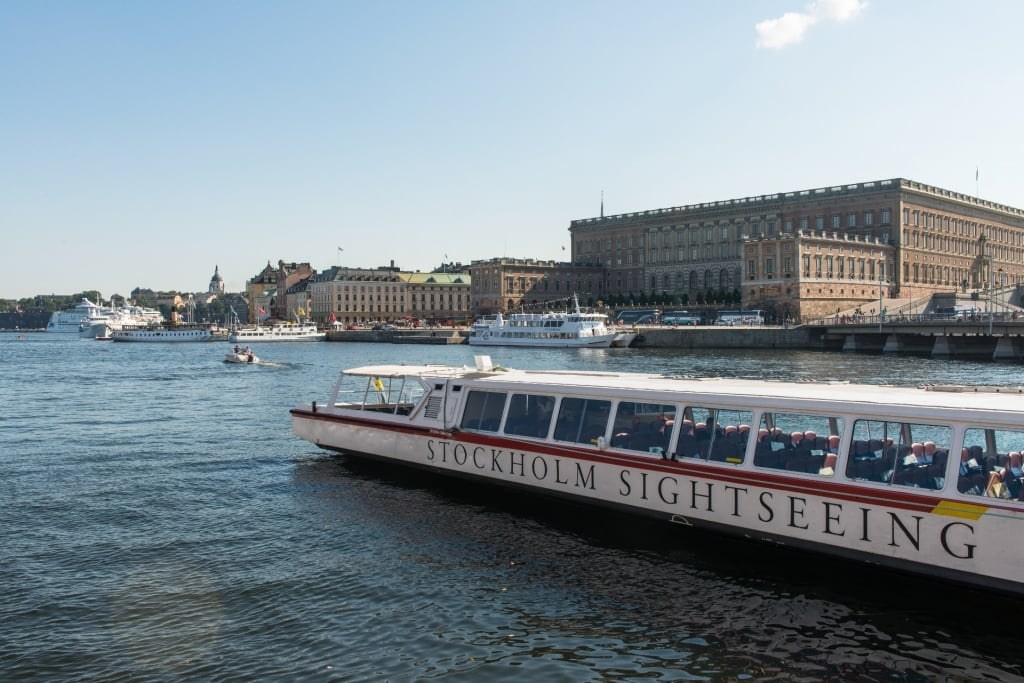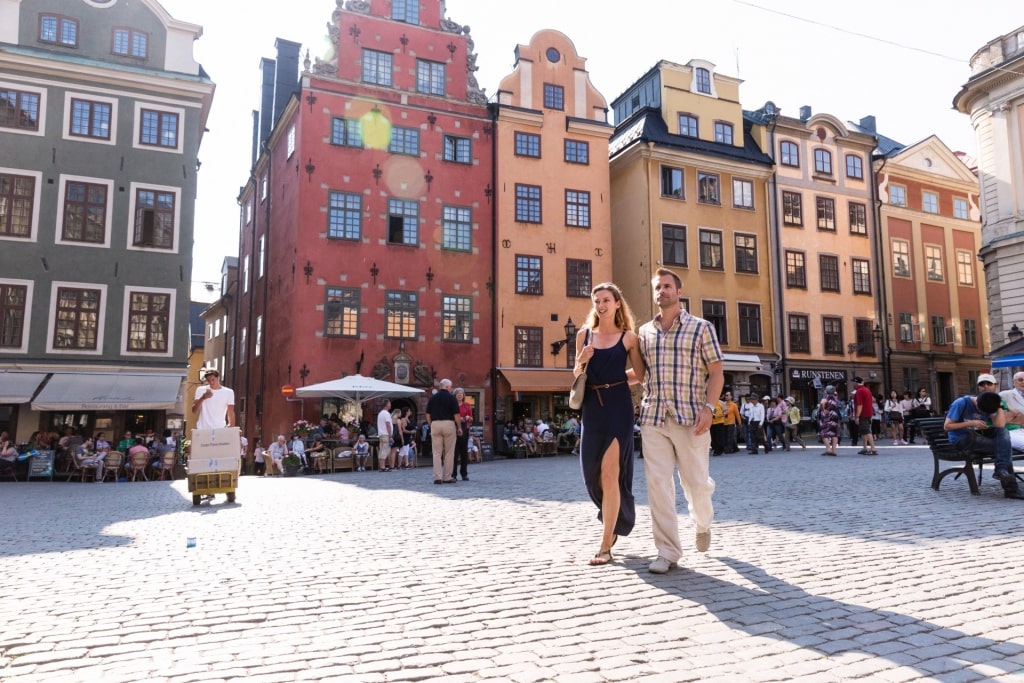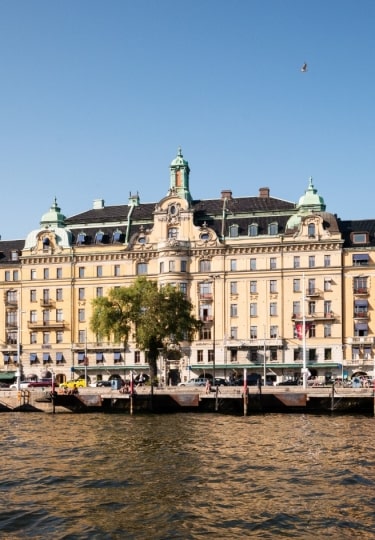The best time to visit Sweden is during the long, light days of summer. This is a time of warm weather, and a general sense of celebration as locals embrace 18 or more hours of daylight.
Sweden has considerable variations in climate, given that the north of the country is inside the Arctic Circle, while the south borders the relatively balmy (in summer, at least) Baltic Sea and Gulf of Bothnia.
To appreciate the best of beautiful Stockholm, sprawled over 14 islands, and the exquisite medieval city of Visby, on an island in the Baltic Sea, summer is the best time to go to Sweden.
Visiting Sweden by Season
Summer

Stockholm
Summer is a joyful time in Sweden. It may be short, but the days are long; in Swedish Lapland, the sun doesn’t set at all, while in the south, you can expect wonderfully light evenings and 18 hours of daylight. The weather is warm; expect average daily highs of 59.4°F (15.2°C) in June, rising to 64.8°F (18.2°C) in July, the hottest month.
Travel to Stockholm in summer and you’ll see locals swimming in the sea, even though the water temperature may seem brisk to those accustomed to warmer climates. A lot of Swedes have a summer house on one of the thousands of tiny islands scattered off the coast, and all summer long, you’ll see ferries buzzing back and forth from the waterfront in the capital.
By August, temperatures are still pleasant, but rain is more likely. August and September are the wettest months of the year in eastern Sweden, with an average of 2.6 inches (65mm) of rainfall.

Royal Canal, Stockholm
Fall
Fall comes early in Sweden as the days begin to get shorter and temperatures drop. September brings beautiful amber and scarlet foliage, especially on the tundra in the north.
By October, average daily highs are a chilly 44.6°F (7°C), although rainfall is relatively low in the south, at 1.6 inches (40mm). By November, minimum daily temperatures hover around freezing and snow may fall.
The advantage of the short days, if you’re visiting Sweden in the fall, is that there’s an excellent chance of seeing the Northern Lights rippling across the sky, all the more so if you’re away from the light of the urban areas.
Winter
Winters are bitterly cold in Sweden, with much of the country blanketed in snow and the sea frozen in places. In the far north, the sun does not rise at all between mid-December and early January. In contrast, Stockholm and the far south are relatively mild, with a few hours of daylight in December. But there’s still likely to be snow on the ground from December through February.
Winter in Sweden is a time for blazing fires, dressing up warm, and enjoying the opportunities for winter sports.
Spring
Spring in Sweden is a time of awakening, as the snow melts, wildflowers bloom, and the days begin to get longer. March is still cold, with temperatures around freezing and snow on the ground, but by May, Stockholm is basking in a relatively balmy 51.4°F (10.8°C).
When Is Rainy Season?
Sweden receives relatively little rainfall. There is no single rainy season as precipitation is spread fairly evenly over the year.
August and September are two of the warmer months, but they’re also the wettest, with Stockholm seeing 2.6 inches (65mm) of rain in each, and rain likely on nine days.
Of the spring and summer months, May has the lowest rainfall, with just 1.4 inches of rain (35mm).
When Is High Season?
High season in Sweden is from May to July, when the weather is fine and the mercury rising. This is a time for the festivals that Sweden is known for—“white nights”, staying out late, and celebrating the bounty of the land; berry-picking is a national pastime.
The summer solstice is a particularly special time to visit, with people lighting bonfires, dancing, feasting, and staying up all night.
When Is Shoulder Season?
Southern and eastern Sweden’s shoulder season is brief. April and October could be regarded as shoulder months in the capital, and even August, which tends to see higher rainfall.
But whatever the weather, Stockholm in particular offers wonderful museums and attractions that don’t depend on sunshine, from the spectacular Vasa Museum to the Nobel Museum, the Royal Palace, and ABBA The Museum.

Vasa Museum, Stockholm
When Is Low Season?
Low season in the south of Sweden is the winter months, when it’s cold, snowy, and dark. This is not the best time for sightseeing.

Gamla Stan, Stockholm
Discover Sweden’s impressive culture and endless natural beauty for yourself. Browse Celebrity’s cruises to Sweden and plan your next vacation.


